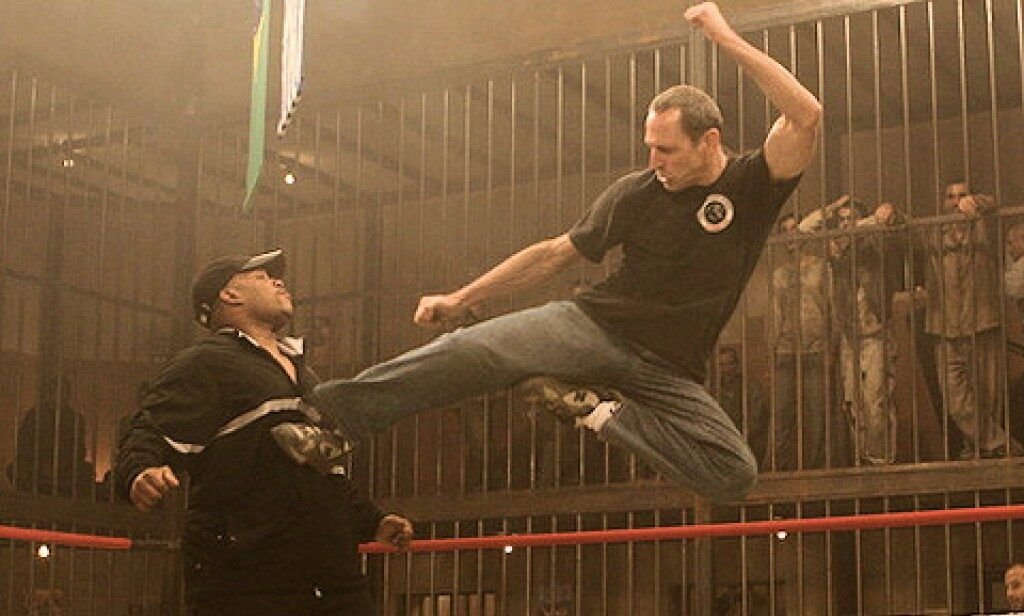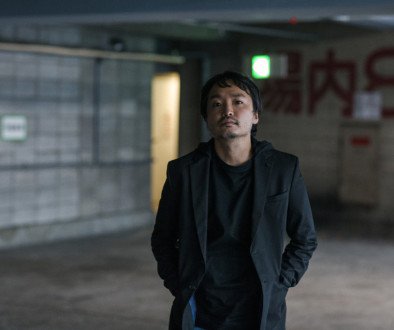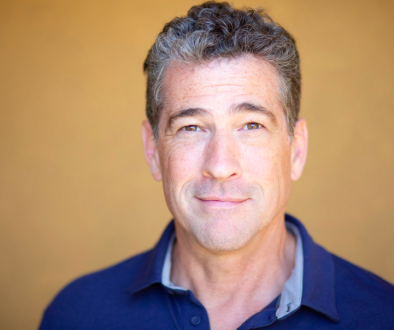Planning The Havoc: A Conversation With HOUNDS OF WAR Director Isaac Florentine
Isaac Florentine has firmly established himself as a director on whom diehard action fans can rely. Since the early 90s, he has consistently delivered films with breath-taking action sequences that rival, and in many cases, far surpass those in larger-scale productions. Beginning his career in the trenches of very low-budget martial arts film production, while also directing the English language inserts for various iterations of the long-running Japanese-import children’s television franchise POWER RANGERS; Florentine developed a style of filmmaking based strongly on clearly framed and edited, highly kinetic action set pieces. His quality of work in these areas, in less than optimal conditions, caused him to rapidly become an in-demand talent during the, then still thriving, world of “Direct to Video Store” film releases. He would not only collaborate with action cinema stalwarts Gary Daniels, Dolph Lundgren, and Jean-Claude Van Damme— he gave each one rock-solid, highly entertaining, entries into their lengthy filmographies.
It was during this period that Isaac Florentine first discovered, and developed a prolonged and highly celebrated working relationship with, British actor Scott Adkins. Bonding over their shared love of martial arts– the pair have, to this date, collaborated on eleven separate projects. Two of which, UNDISPUTED III: REDEMPTION and NINJA: SHADOW OF A TEAR have been firmly enshrined as modern cult classics of the “fight film” genre and are considered by knowledgeable action cinema aficionados to be the clear high water mark for “DTV” martial arts pictures as a whole.
With the acclaim from that partnership, Isaac Florentine has expanded his action repertoire beyond films focused on just accomplished martial artists and in doing so has given many established Hollywood veterans the chance to remind audiences of their own “action hero” chops. His latest, starring Frank Grillo (COPSHOP), Robert Patrick (PEACEMAKER) and Rhona Mitra (DOOMSDAY), is HOUNDS OF WAR. This action thriller about an elite group of mercenaries tasked with one final mission, to remove a high-level terrorist, that quickly spirals out of control is another solid genre effort from Florentine that fully demonstrates why he has become such a trusted brand in the action community.
In the lead-up to HOUNDS OF WAR’s digital release today, I had the chance to sit down for a brief chat with Isaac Florentine about his directorial methods and inspirations.

________
You have worked in the action genre for over three decades. How have you grown as a filmmaker from your early days of directing Power Ranger episodes and small films like DESERT KICKBOXER and HIGH VOLTAGE, to earning underground acclaim with UNDISPUTED 3, to your most recent film HOUNDS OF WAR?
I think there is nothing like experience other than experience. When I was doing DESERT KICKBOXER– it was my first American movie, my first feature. I found, here, the way that people worked was fully “master and [then] coverage.” (Ed. note: Shooting a “master” means filming the scene in whole from one main angle. After this, the scene is reshot multiple times from different angles and distances so that this “coverage” footage can be edited into the master shot in post-production to create a finished action scene. The intention is to give the film’s editor multiple options for piecing the scene together.)
I had just come from Israel and when I used to shoot there I didn’t have that notion. So in my head, it was always “edit-to-camera.” First, you edit it in your head, and [then] you shoot only what you need with the right lens and the right angle– so you know how to cut.
When I came here and I shot that first movie and people saw my process they asked, “Why [are] you not shooting your master?” I had to explain– I basically had to argue with them that’s not the right way to shoot action. When it came to Power Rangers though, that’s what they wanted, they wanted the “edit-to-camera” [style] because it had to combine with the Japanese footage that was already shot, so it was perfect. I used so many episodes that I did on Power Ranger as a lab for me because the attitude there was, “Look, you go and you shoot every day or direct every day, go and try new things. If it doesn’t work we can re-shoot it.” So it was for me a place to experiment.
[After that] I went and did HIGH VOLTAGE. I had come out of “the lab.” I had gained experience. You can see that in the style [of the film], it had more confidence. I feel that HIGH VOLTAGE really cemented my style. By then I had it and all I had to do was improve on it. And it’s not a matter of declaring something is “my style.” It’s when I see or even if I think that’s the way that I see it, I don’t call it a style. It’s [just] your way– your natural reaction of telling a story whether it’s a drama or a fight story.

I know you are a lifelong martial arts practitioner and you frequently spotlight other serious martial artists in your work. But as time has gone on you are working with more and more non-martial artists. Has your approach to directing actors changed with the shift from one group to the other?
I’m a karate practitioner, I’ve been doing Japanese karate for 53 years now. Karate is very accurate, it’s very sharp. When I shoot I try with one cut to another, within the scene, to keep it very precise. The precision is important. When you’re doing a fight scene with somebody that has [a] martial arts background it’s very easy to explain [this] to them.
But I found that actors, even if they don’t have a martial arts background, they often have stage-fight backgrounds and they do love to do fight scenes. I remember shooting ASSASSIN’S BULLET years ago with Christian Slater, he loved it. I shot a movie for Antonio Banderas, ACTS OF VENGEANCE, he wanted to do that movie with me because he specifically wanted to do a “fight” movie. He knew all of his choreography and he did everything.
The same in my latest movie, HELLFIRE, that I’m finishing now with Stephen Lang, we shot it when he was 70 years old. He is doing himself, 90.9% of all the fights, it’s unbelievable. They enjoy it, they want to do a fight movie and they want to do it with a director that will make them look good.

That is definitely you. The way you move the camera is very dynamic. Can you tell me about how you visualize action?
I try not to cut. I try to be fluid and let the mood sustained by a shot tell the story. I don’t want to show off just to demonstrate that I can make a long, continuous shot. I want to tell the story in the best way. Many times, I wait until I find the location [for the scene]. That [helps] establish how the scene will go. I found that if you start to tell the story in a correct [organic] way, it flows, If you start it in a incorrect way you’ll get stuck.
The hardest stage for me in doing a movie is finding the right locations, and of course, the casting. But finding the right locations will determine the look of the movie, the way that the scene will play and the action. The action is always being tailored to the location.
In HOUNDS OF WAR, for instance, the big action scene in the beginning was supposed to be in a big palace. We didn’t find what we wanted at the palace [location]. So we switched it, just a few days before shooting really, to an old, destroyed hotel that could stand in as a compound. And we shot all of the early parts of the movie in there. It’s not in the script, in the script it was planned to a totally different location. We had to modify everything, so the action and the shots were tailored within that location.

As we wrap up, I wanted to ask you about your filmmaking heroes. Who inspires you as a director?
Sergio Leone.
What was it about Leone, specifically?
I saw his movies when I was young. I remember I saw A FISTFUL OF DOLLARS. My favorite genre was always westerns, but this was totally different. I remember after watching that movie, as a kid, I went to my brother, who was eight years older than me. And I just told him, I said, “Look, it was very interesting. You saw the thumb, you saw the eyes– these extreme close-ups.” You didn’t see that in any other movies. “Who makes the decision on how to shoot it like that?” And he told me, “Oh, there is something called a director. And he is the one that makes those decisions.” And I said, “Wow, okay.”
This is how I started to get interested in cinema. And so, A FISTFUL OF DOLLARS, FOR A FEW DOLLARS MORE, and THE GOOD, THE BAD, & THE UGLY I saw hundreds of times. and of course, ONCE UPON A TIME IN THE WEST, for me, really was the textbook of how to shoot a movie. Sergio Leone influenced me most, out of everybody.
A wonderful choice for inspiration. Thank you for your time today, Isaac. Congratulations on the release of HOUNDS OF WAR.
Thank you, Matt.
_______________
HOUNDS OF WAR is available now on Digital.
Matthew Essary has been a professional film critic since 2017 and a film fanatic for much longer. Currently residing in Nashville, TN, he also co-hosts the film podcast "Video Culture" (available on all podcast platforms). He can be reached at "WheelsCritic@gmail.com" and on Social Media at https://bsky.app/profile/wheelscritic.bsky.social





